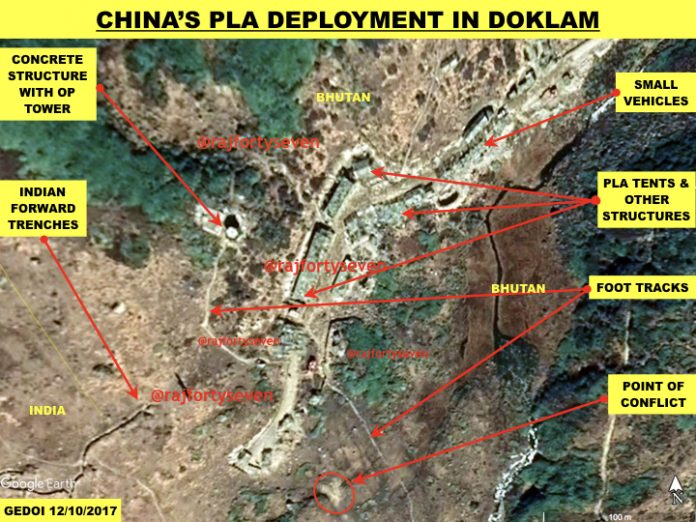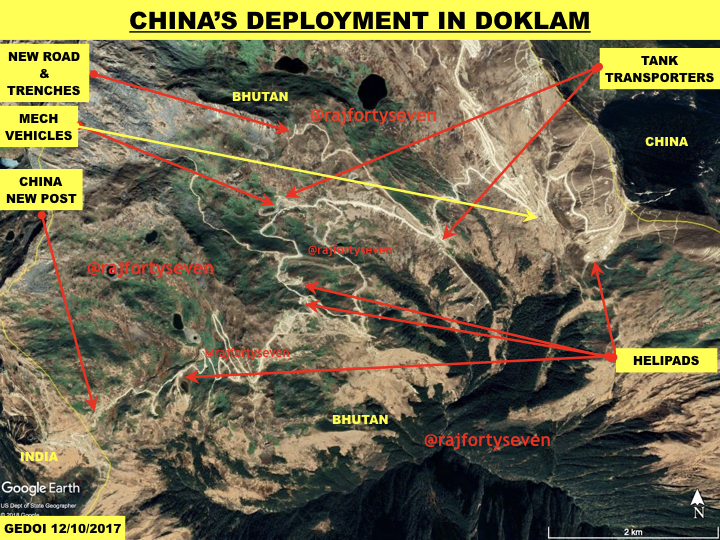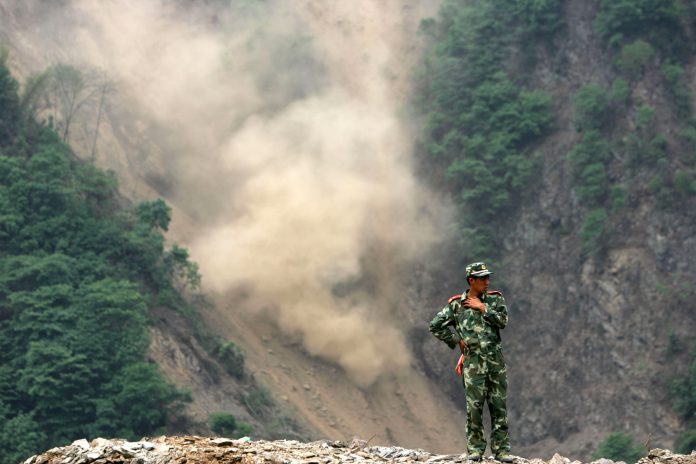Hendrik_2000
Lieutenant General

Well now India is facing even stronger PLA Nyingchi encampment close to Arunachal Pradesh. Beside encampment, China built first class Highway and fast track Railroad(2018) making it well supplied and well connected fortress. Also the airport is now upgraded with barrack and Heliport. garage,aviation depot
Basically they convert Nyingchi from rotation and temporary present into permanent present Congratulation India you won!
India’s new headache far from Doklam: Chinese troops seen near Tuting sector incursion
4 January, 2018

Vinayak Bhat/ThePrint
There are also indications of the presence of 2 additional PLA brigades at Nyingchi town, and a new railway line could start this year.
New Delhi: The incursion and road-building attempt by the Chinese in the Tuting sector in Arunachal Pradesh is a new problem for India as it is backed up by a large presence of PLA troops and infrastructure like in Doklam.
Satellite images accessed by ThePrint show that China has built facilities to accommodate thousands of PLA troops and speedy progress has also been made on a railway link that can quickly bring in reinforcements.
The incursion in the Tuting sector was discovered on 28 December when Chinese workers were found to have illegally built a track 1 km into Indian territory at the point where the Brahmaputra river enters India from Tibet.
An Indian Army patrol later stopped the work and Chinese construction equipment is still lying on the Indian side of the disputed border.
that exclusive satellite images showed that the Chinese had amassed troops near the Doklam plateau even after a bitter, two-month military face-off between the two countries had been peacefully resolved on 28 August. Doklam is in the tri-junction area of India, China and Bhutan.
Exclusive satellite images of the Tuting sector show a similar build-up.
00:00
01:18
It is believed that two brigades of the People’s Liberation Army (PLA) — namely the 52 Mountain Brigade and 53 Mountain Brigade — are located here in the town of Nyingchi in Mainling district. The rugged area has mountains ranging from 4,000 to 5,000 metres, with most towns and villages located along the Brahmaputra, or Yarlung Tsangpo as the river is known on the Chinese side.
While connectivity with Lhasa on the west and Chengdu on the east has been poor in the past, construction of roads and tracks started in the late 1990s. Google Earth satellite images of 14 November 2017 provide a startling insight into the Chinese infrastructure build-up in this remote area.
New garages and accommodation
A large number of barracks, buildings and warehouses have been constructed for the PLA over the past 2-4 years in the Nyingchi area. Recent satellite images reveal new constructions — most likely for the PLA — near the Mainling airport.
There are five large C-shaped three-storey buildings, along with 16 large sheds to accommodate both tracked and wheeled vehicles. These garages and buildings could serve a strength of almost 2 mechanised brigades. The Nyingchi area can easily accommodate a division plus strength.
Considering the Doklam and Nyingchi divisions (if not division plus) of the Chinese PLA, it could require at least four Indian corps level formations to tackle in mountainous terrain if a 1:6 or 1:9 ratio is considered sufficient.
New railway line
China had planned a railway line from Lhasa to Nyingchi along the Brahmaputra, which was supposed to be completed by 2021. There were reports that the line would reach Nyingchi by 2020, a year in advance.

Vinayak Bhat/ThePrint
However, the latest satellite images show an interesting twist. Work on the new railway station is in progress at Bayi in Nyingchi area. The base of the railway station and railway track is complete.
Most of the railway tunnels and bridges are also complete, suggesting that the track will be functional by December 2018, if not by June 2018. It will ensure that a trip from Lhasa to Nyingchi will take just about three hours. Nyingchi, located barely 15 km from the border, poses a serious security threat for India.
New road
The new road from Lhasa to Nyingchi was recently completed, according to reports in the People’s Daily. The road with a length of 410 km passing through areas as high as 3000 m can be covered in less than five hours.
It is a modern four-lane highway, which can carry heavy traffic at speeds of 80 kmph.
New dam
A new hydroelectric dam has been constructed after 2014 on Nyang river, very close to Nyingchi town. The dam has created a large reservoir of almost 6 km, displacing many small villages.

Vinayak Bhat/ThePrint
Heliport
The helipad which was once part of British India has been upgraded to a heliport with hangars and hard standings for at least 10 large choppers. A number of large helicopters mostly Mi-171 have been observed at this heliport from time to time.
Recently even attack helicopters have been observed here.

Vinayak Bhat/ThePrint
Upgraded airport
A dual-purpose airport was constructed near Nyingchi in 2004 with an airstrip of 3 km in length and 60 m in width. It was mainly used by civil air traffic and sometimes by military reconnaissance aircraft.

Vinayak Bhat/ThePrint
Recently, the airport has been upgraded with an additional 200 m x 150 m apron and an arrival lounge. The aviation fuel point behind the airstrip has also been upgraded.
Last edited:









